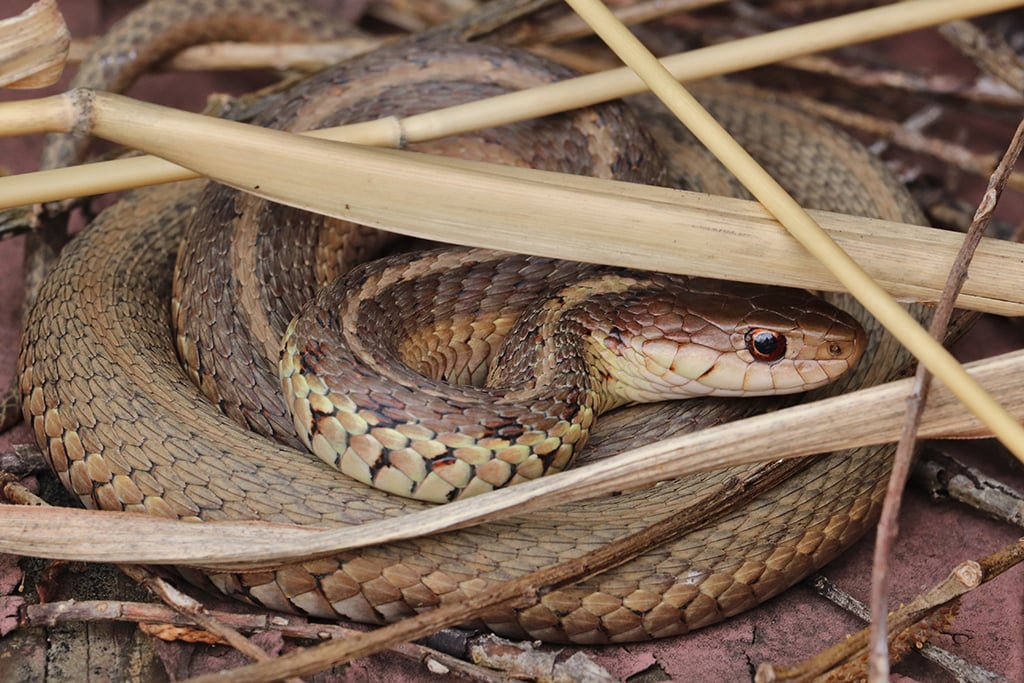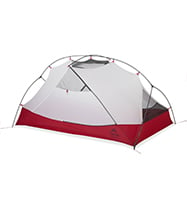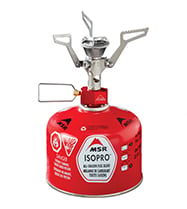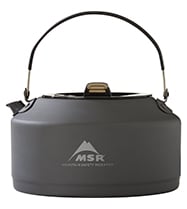Snake Safety Tips for Hikers on the Trail
Avid hikers have to deal with a lot of dangerous situations, from bad weather to rough terrain. When most hikers picture a dangerous animal encounter, they may think about coming face to face with a bear, and while this is definitely a situation a hiker needs to be prepared for, you are much more likely to come across a snake while hiking. Snakes are extremely common across the entire globe, and there is no doubt you will encounter one while hiking at some point in your life. However, these encounters don’t necessarily have to be dangerous or scary.
I have spent most of my life outdoors, and as a herpetologist, snake encounters are something I look forward to. While I may be part of the minority that actively seeks out snakes, that doesn’t mean I am not fully prepared for a dangerous encounter. Snakes should always be respected and thankfully there are a few tips and tricks that will ensure a safe experience for you and the snake.
Keep reading to learn the safety tips that every hiker should know before venturing out on the trails.
Basic Snake Safety & Common Problems
The most common problems hikers experience when it comes to snakes are usually a result of not being properly prepared.
Knowing the area you are hiking, where the populated trails are, what snakes may be present, and what gear is needed are just a few precautions that will make your hiking trip much safer.
A lot of basic safety measures to safeguard against snake bites happen before you even reach the trail.
Wearing proper hiking gear can make a huge difference when coming across snakes. Long pants and hiking boots that cover your ankles are one of the first lines of defense against snake bites. These will ensure the areas that are most likely to receive a snake bite are properly protected.
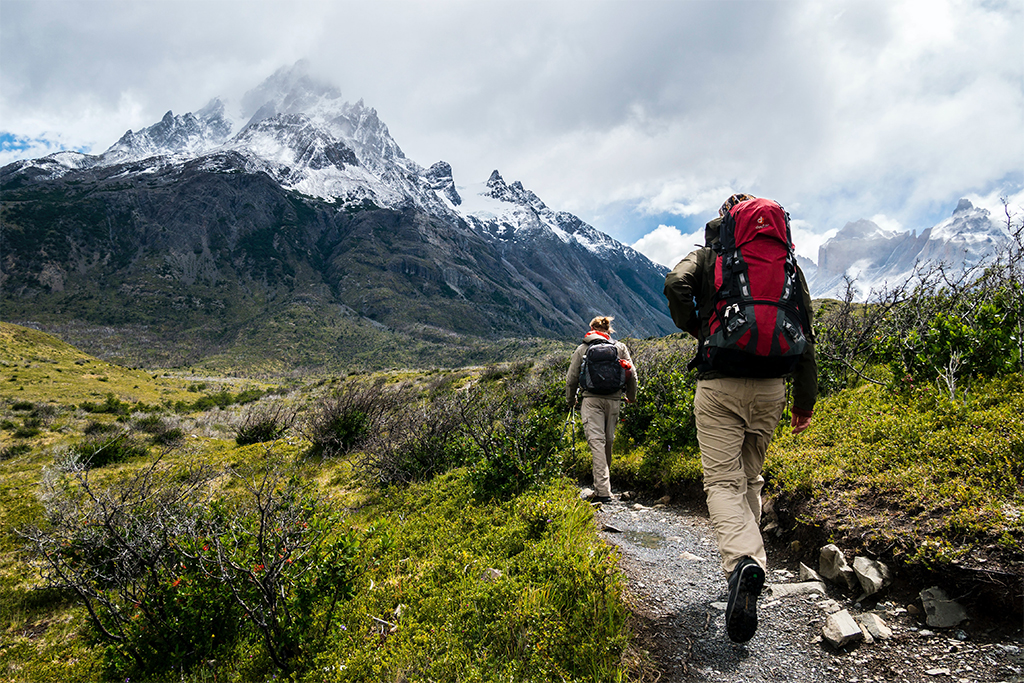
How to Avoid Snakes While Hiking
The best way to avoid snakes on the trail is to avoid areas where they like to hang out. Staying on populated hiking trails is a great way to avoid snakes. These areas are usually highly trafficked by people and snakes tend to avoid them.
If you see a snake on these paths, they are usually just passing through on their way to a different area.
Along these same lines, you should try to hike in areas with high visibility that will make it easier to see where you are placing your feet. The time of year can also make a difference. Hiking during the cooler months when snakes are less active will make it a lot less likely to come across one on the trail.
Snakes You Might See
The snakes you may come across on the trail will depend highly on where you live. The snakes you will see hiking in Texas will be completely different than those you might see in Montana. Some common snakes that can be found over all of North America are rattlesnakes, garter snakes, copperheads, bullsnakes, and rat snakes.
This is not a complete list and you should always check what snakes are commonly found in your area and how to identify them. Field guides are a great way to identify snakes in your area, and there are a variety of books and even apps for your phone that serve as pocket field guides.
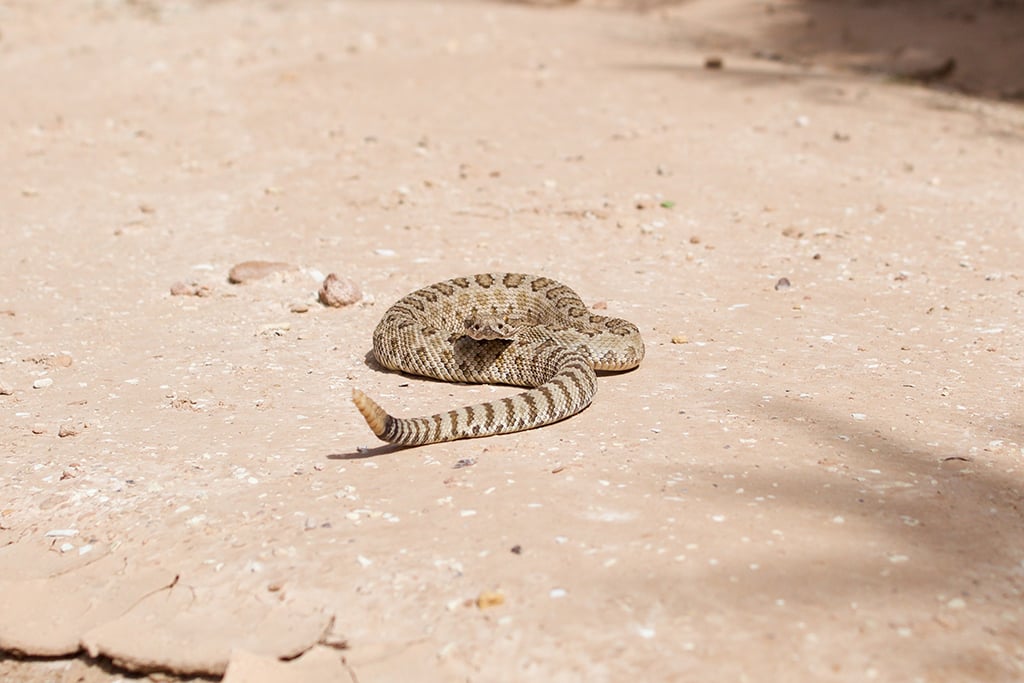
Encounters & What to Do if You See a Snake
Encountering a snake while hiking can sometimes be unavoidable, but the key is knowing what to do if you see one. If you come across a snake on the trail, leave it alone. Always maintain a 6-10ft distance between you and the snake, and if you leave it alone, it will likely just leave once it feels safe enough to do so.
It will always be the safest option to leave a wild snake alone, regardless of its species. Even if the snake can be identified as non-venomous, some larger snakes can still pack a punch with their bites. While bites from a harmless species won’t threaten your life, they don’t particularly feel good.
Avoiding Bites
The best way to avoid being bitten by a snake is to leave it alone. Most snake bites happen when the snake is being moved or bothered. Even if you are attempting to move the snake with a stick or rocks, agitating the snake is the fastest way to provoke a bite. These actions, while their intentions may be harmless, will be highly threatening to the snake. All they see is a large predator antagonizing them and when they believe their lives are in danger, they will use all their defensive behaviors including biting. If you see a snake on the trail, back away until you are a safe distance away, wait until the snake moves or find a way around the snake while maintaining the safe distance of 6-10ft.
What To Do If You’re Bitten By a Snake
If the worst-case scenario occurs and you find yourself bitten by a snake, the most important thing to do is stay calm. Try to keep your heart rate down and back away until you are out of strike range. Next, try to take a picture or take note of what the snake looks like. If you can identify it as non-venomous, you can treat the bite as any other open wound; however, if the snake is venomous or you can’t identify it, you will need to seek help immediately. If you can, call emergency services or find the nearest people to help you reach a hospital. In the meantime, sit or lay down, keep the wound in a neutral position, and wash the bite with lukewarm water and soap if available. Do not apply a tourniquet, cut the wound, try to suck out the venom or take any pain relievers. For a complete first aid list, check out the CDC’s website on snakebites.
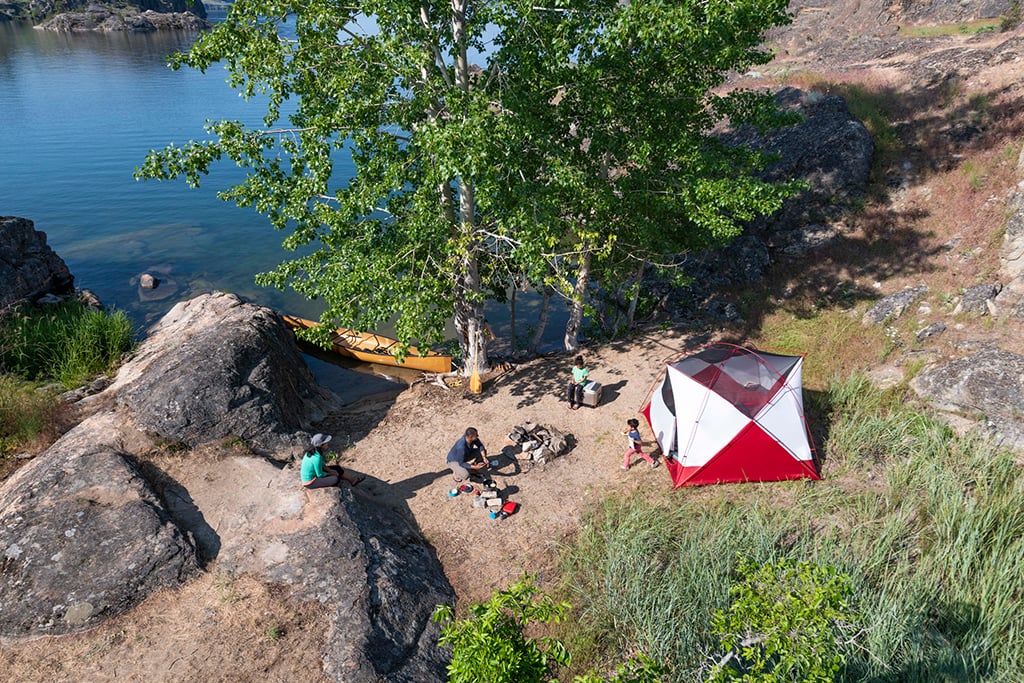
Conclusion
While you may never want to be a snake enthusiast that seeks out snakes on the trail, that doesn’t mean you won’t come across them when hiking. Snakes are extremely common across North America, and it is extremely important to know what safety precautions to take, what to do when you encounter a snake, how to avoid getting bitten, and what to do if a snake bite does happen. Knowing these few safety tips could even mean the difference between life and death when it comes to dealing with venomous snakes.
Proper preparation is the best way to have safe wildlife encounters and reading this article means you are already on the right track!
Related Posts:
- 6 Training Tips to Get You Hiking Farther, Faster
- Hiking a Route vs. Hiking a Trail: Part 1
- Tips for Thru-Hikers: Hiking the PCT & CDT in the Snow
 About the Author
About the Author
Nigel is a lifelong reptile lover and has kept pet lizards since childhood. His first was a pet Leo which was shortly followed by a Beardie named, Rocky. For the last 10 years he has kept over 20 different species but his favorite is his Banana Ball Python, Monty.

